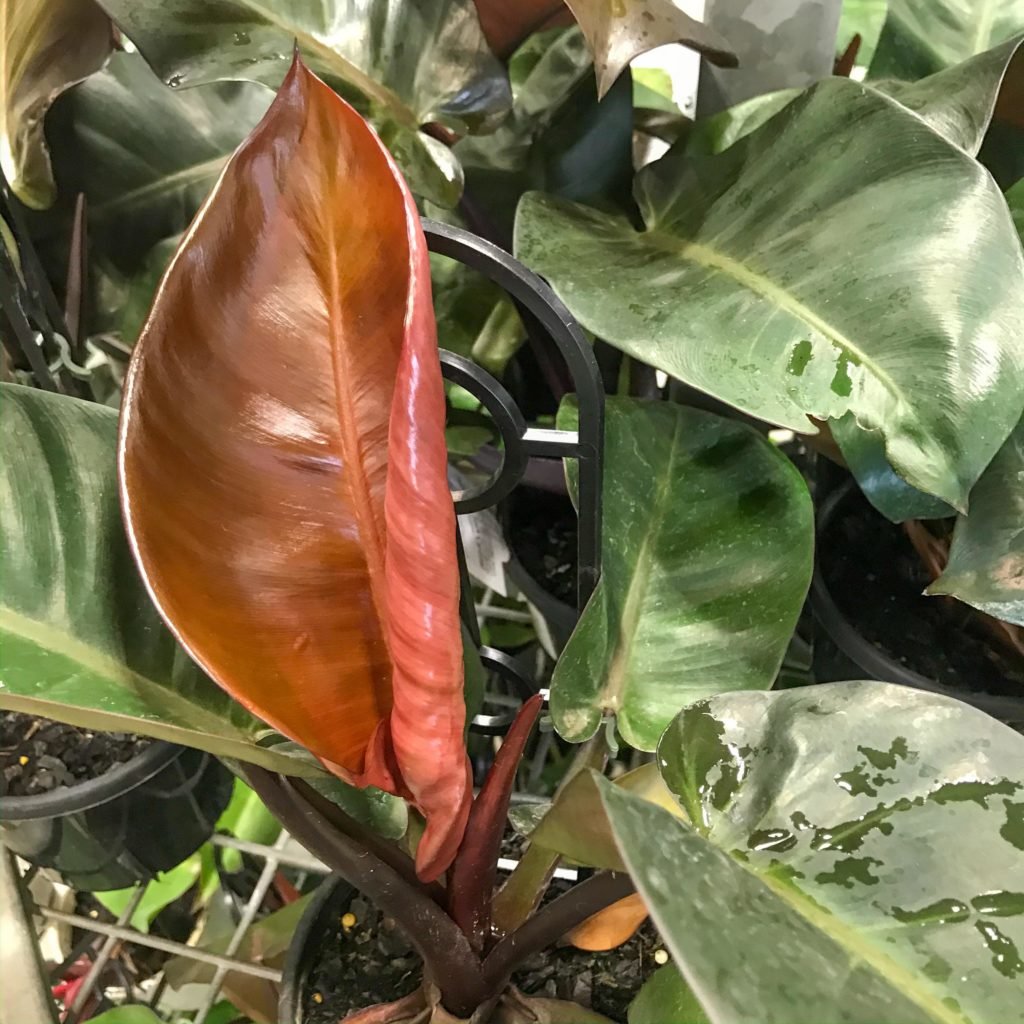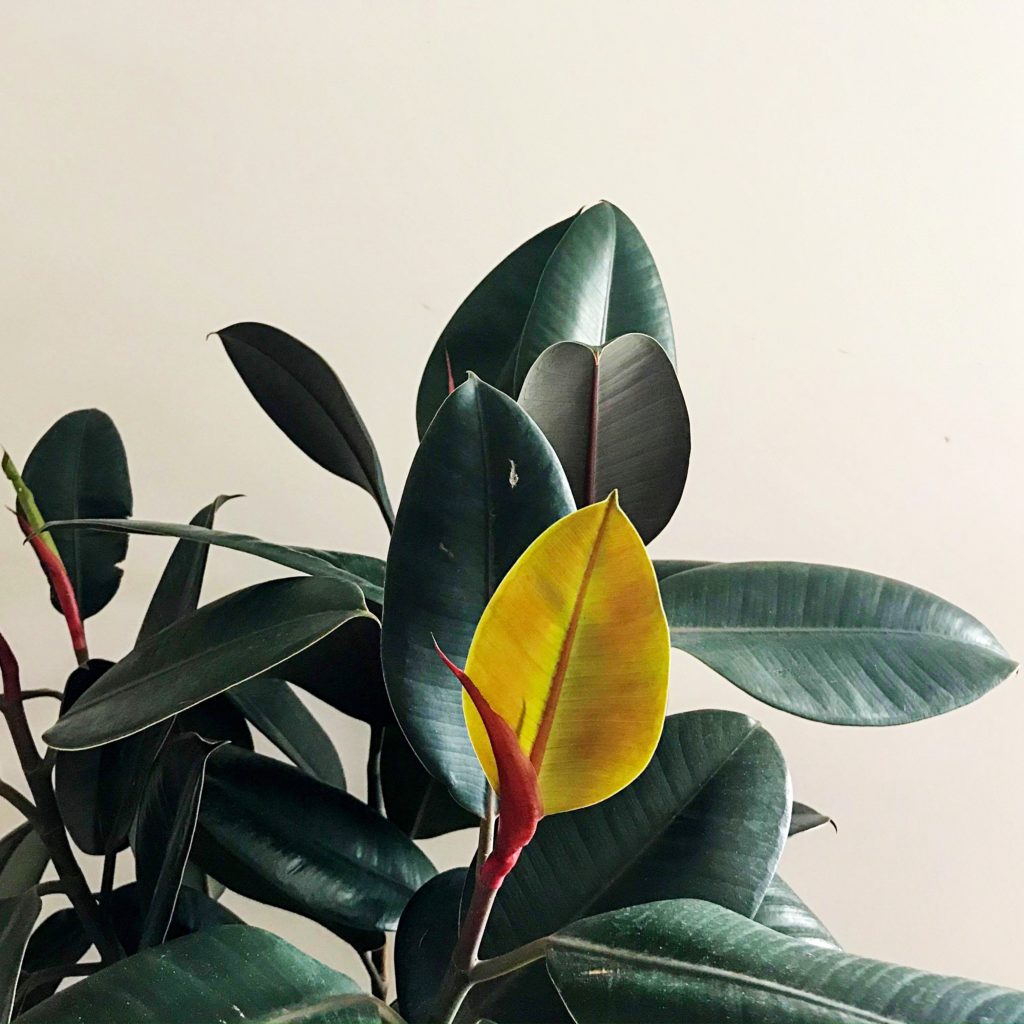Black Cardinal Philodendron a.k.a. Philodendron Erubescens

Black Cardinal Philodendron are a large leafed philodendron easily identified by their rich dark chocolate and black foliage coloration. This species is native to South America and is part of the Araceae family. These philodendron make a great display plant with their unusual deep dark colors, that beautifully contrast vibrant greens.
The big glossy leaves start of with lighter bronze shades of color until they eventually mature to a deep black, chocolate appearance. Young plants will start off with green color accents until maturity.
These philodendron are low maintenance and hardy so are a perfect beginner plant. In the sections below we will go through the basic care requirements of your Black Cardinal to make sure you have the best chance at keeping them happy and healthy.
Black Cardinal Plant Overview
| Full Size | 1 metre |
| Light | Bright indirect |
| Temperature | 65-78˚F (18-25˚C) |
| Humidity | Above 40% |
| Cost | $ |
| Care Level | Easy |
| Toxicity | Toxic |
Black Cardinal Size
Typically Black Cardinal Philodendron when kept indoors under ideal conditions will reach approximately 3 Foot (1 metre) in length. This Perennial plant has shrub like qualities and should measure 1.5 Foot (50cm) in width full grown.
The tapering foliage comes to a point at both ends, and is similar in shape to similar species like imperial gold and rojo congo. Black Cardinal Philodendron mature leaves will measure 1 Foot (30cm) long and 8 inches (20cm) wide.
Light Requirements
Your Black Cardinal Philodendron will grow best when positioned in bright indirect light. Signs that your Black Cardinal is not getting enough light is the plant becoming long and leggy. This can be resolved by changing the position of your plant to somewhere that better suits its light requirements.
A sign your black cardinal may be receiving too much light is the developing of yellowing coloration on multiple leaves. Moving your plants position immediately to better bright indirect light is the best solution. If only singular older leaves begin to yellow don’t stress, this is a natural occurrence. If you do not like the appearance of old, yellowing foliage you can simply cut them off with a clean pair of pruners.
Temperature
Black Cardinal Philodendron prefer warmer temperature conditions and will grow best when kept in an area which maintains a temperature of 65-78˚F (18-25˚C). When keeping your plant in conditions below 55ºF (12ºC) for prolonged periods of time you can expect it to develop health issues or seize growing. Keep in mind that these, like most Philodendron, are frost sensitive and will be required to kept inside during winter months in frost sensitive climates.
Humidity
Maintaining a medium humidity (above 40%) will assist in keeping your Black Cardinal Philodendron happy and healthy. Ideal indoor locations for this plant include; living rooms, bathrooms and kitchens. Black Cardinals can also be happily kept in greenhouses as these are a great way to have greater environmental control. Make sure to checkout our guide to keeping indoor plants in greenhouses.
Providing humidity for your plants will encourage bigger and healthier growth. There are a few thing you can do that can help bump up the humidity in your home. The things you can try are:
- Misting your plants
- Pebble trays
- Grouping plants together
- Humidifier
You can read more about increasing humidity with our tips for indoor plant humidity.
Watering Requirements
You should water your Black Cardinal Philodendron when the top inch of soil is dry. You should check the soil with your finger to check if it’s dry before watering. When watering your Black Cardinal Philodendron, be sure to water the plant thoroughly, allowing the water to drain completely. Aside from solely relying on the watering frequency to tell when your plant is thirsty, a tell tale sign that your Black Cardinal needs water is drooping leaves.
When it comes to watering your plants, you need to be cautious of over-watering. Excess water to the soil can cause it to become waterlogged. This can cause the roots to start rotting and then they’ll no longer be able to provide any water to the plant. This can cause fungal issues, pest problems and root-rot. A sign that you’re under-watering your Black Cardinal Philodendron is curling leaves.
Fertilizing requirements
In optimal conditions your Black Cardinal should be fertilized every month during spring and summer and every 6-8 weeks during autumn and winter. We recommending fertilizing with a balanced liquid fertilizer such as Miracle-Gro Indoor Plant Food. This will assist in keeping your plant happy as well as promote healthy growth.
Slowed growth, during the growing season of Spring & Summer is a good tell tale sign that your philodendron is not receiving enough nutrients through fertilizer. This is assuming that your plant is receiving the correct amount light and water.
Black Cardinal Philodendron are susceptible to magnesium and calcium deficiencies. This nutrient deficiency can be easily identified by new leaves developing with pale colors. Calcium plays a key role in vital plant functions such as nutrient absorption so it is important to keep on top of this. The addition of dried crushed egg shells can assist in upping your plants calcium levels. Alternatively store ready solutions include Cal-Mag Plus, a calcium and magnesium supplement.
Black Cardinal Soil Requirements
Black Cardinal Philodendron requires a rich, well draining soil. ‘Premium indoor potting mix‘ is recommended to be used as most brands already contain fertilizers which are great for establishing your plants quickly. The addition of perlite will also assist in drainage to help in avoiding issues such as root rot.
Philodendron can grow fast, especially during spring and summer, and therefore will require re-potting frequently during these times. I have personally re-potted them up to 3 times in a single growing season. Choose a pot that is only slightly larger in depth and diameter, 2 inches (5cm) in either direction is ideal.
The best time to first re pot your philodendron is after winter as the plant exists its dormancy stage. After re potting, make sure to thoroughly water your plant until water trickles from the drainage holes. A small application of liquid indoor plant fertilizer should help avoid any shock.
Note: As your philodendron grows it will begin to shoot off new roots from nodes above the soil level. When re-potting, placing these roots below soil will help strengthen the plant by allowing it to develop a greater root system.
Diseases & Pests
The common pests you may encounter on your Black Cardinal Philodendron are Aphids, Mealybugs and Scale. The most common disease you may encounter is Root-rot. For more information on identifying and treating pests see our guide on common houseplant pests.
The best thing you can do when it comes to pests on houseplants is to try and avoid any pest infestations from starting. There are a few things you can do that will assist in preventing any pest infestations and these things are:
- Checking new plants for pests or isolating new plants for up to a week.
- Check your plants every few days for pests.
- Trim off any dead or dying leaves.
- Wipe down leaves if you notice them getting dusty.
- Keeping your plants healthy. A healthy plant will be able to handle an infestation better than those that aren’t as happy.
- Isolate any plants that have pests.
Following this will assist in keeping pests away as well as catch them early on before any severe infestations are able to start. Keeping plants healthy and in the correct living environments can help to deter any pests from invading your plants.
Toxicity
Black Cardinal Philodendron contains calcium oxalate crystals which are toxic to both pets and humans if ingested. If any part of the plant is ingested, symptoms may include a burning sensation and swelling of the lips, mouth, throat and tongue.



